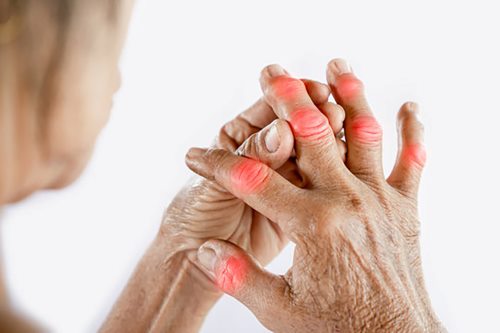As an ayurvedic doctor, I’ve dedicated my career to helping individuals navigate the complexities of diseases starting from gut issues, weight management, PCOS, type 2 Diabetes, rheumatoid arthritis (RA) disease, etc., and adopting a healthy lifestyle with healthy food habits and regimes. Each day, I am humbled by the opportunity to make a difference in my patients’ lives—to offer medical expertise, compassion, empathy, and unwavering support on their journey to wellness. During this whole journey, I came across some patients suffering from RA, which is a chronic autoimmune disease that primarily affects the joints. The symptoms include inflammation, pain, stiffness, and sometimes deformity of the joints. According to the Arthritis Foundation, about 1.3 million people worldwide are affected by RA, with women being more commonly affected than men. While conventional medicine offers various treatments to manage RA symptoms, many individuals seek alternative therapies like Ayurveda for relief and holistic management. In this comprehensive guide, we’ll explore the dos and don’ts of managing rheumatoid arthritis with Ayurveda, covering everything from symptoms and types to treatment options and lifestyle adjustments. Understanding Rheumatoid Arthritis Rheumatoid arthritis is different from the more common osteoarthritis. While osteoarthritis is caused by wear and tear on the joints over time, RA is an autoimmune disorder where the body’s immune system mistakenly attacks its tissues, primarily affecting the synovium (the lining of the joints). This leads to inflammation, pain, and eventual damage to the joints and other organs. In Ayurveda, rheumatoid arthritis is referred to as Amavata. Pain and swelling in the joints can be attributed to an issue with the Vata and Ama. The Amavata treatment, therefore, involves gentle care; moreover, it includes natural detoxification of the body. The treatments consist of fasting; furthermore, they involve improving digestion, and additionally, eliminating undigested food. Other forms of treatment, for instance, include the application of oils, the use of heat, and, furthermore, the elimination of bodily waste. Signs and symptoms of Rheumatoid Arthritis The signs and symptoms of rheumatoid arthritis can vary from person to person; however, they may also change over time. But the general symptoms include: Joint pain and swelling, typically symmetrical (affecting both sides of the body) Stiffness, especially in the morning or after periods of inactivity Fatigue Fever Weight loss Rheumatoid nodules (firm lumps under the skin) Joint deformity over time Different types of Rheumatoid Arthritis There are three main types of rheumatoid arthritis. Seropositive RA: This type is characterized by the presence of rheumatoid factor (RF) and anti-cyclic citrullinated peptide (anti-CCP) antibodies in the blood. Seronegative RA: These antibodies are not present in this type, making diagnosis more challenging. Juvenile RA: This occurs in children under the age of 16 and can be either similar to adult RA or present with different symptoms. Ayurvedic Approach to Rheumatoid Arthritis Treatment Ayurveda, offers a holistic approach to managing rheumatoid arthritis. Ayurvedic treatment for rheumatoid arthritis rebalances Doshas, enhances digestion, fights inflammation, and boosts the immune system. Early Signs of rheumatoid arthritis and Diagnosis Recognizing the early signs of rheumatoid arthritis is crucial for early intervention and management. Some early signs include joint pain, stiffness, and swelling, especially in the morning or after periods of inactivity. If you experience these symptoms, then, consult a healthcare professional for proper diagnosis and treatment. Ayurvedic Diagnosis In Ayurveda, rheumatoid arthritis is classified under “Amavata,” which translates to toxic arthritis. Diagnosis in Ayurveda involves assessing the individual’s constitution (Prakriti), current imbalances (Vikriti), and the nature of the disease manifestation. Ayurvedic Treatment Modalities Ayurvedic treatments for rheumatoid arthritis aim to reduce inflammation, alleviate pain, and improve joint function. Some key modalities include: Herbal Remedies Ayurvedic herbs like guggul, turmeric and ginger have anti-inflammatory properties and also, they can help reduce joint pain and stiffness. Panchakarma This detoxification therapy, in fact, involves various cleansing procedures to not only remove toxins from the body but also restore balance. Dietary Modifications An anti-inflammatory diet rich in fresh fruits, vegetables, whole grains, and lean proteins can help reduce inflammation and support overall health. Lifestyle Changes Yoga, meditation and gentle exercise can improve flexibility, reduce stress, and promote overall well-being. Ayurvedic Therapies External therapies like oil massage (Abhyanga), herbal steam (Swedana), and poultice application (Pinda Sweda) can provide joint pain relief and stiffness. Do’s and Don’ts If you are suffering from rheumatoid arthritis. Here are some dos and don’ts that can help improve your condition. Do’s Consult an ayurvedic practitioner: Seek guidance from a qualified Ayurvedic doctor who can provide personalized treatment based on your constitution and imbalances. Follow a healthy diet: Emphasize on fresh, whole foods. Avoid processed, inflammatory foods like refined sugar, refined flour, and trans fats. Stay active: Engage in gentle exercise, yoga, or tai chi to improve joint flexibility and reduce stiffness. Manage stress: Practice relaxation techniques like meditation, deep breathing, or spending time in nature to reduce stress levels and support overall health. Don’ts Overexertion: Avoid overworking or straining your joints, as this can exacerbate symptoms. Unhealthy habits: Minimize or eliminate habits like smoking and excessive alcohol consumption, as these can worsen inflammation and weaken the immune system. Ignoring symptoms: Pay attention to changes in your symptoms. Consult your healthcare provider if you experience worsening pain, swelling, or stiffness. While rheumatoid arthritis can be a challenging condition to manage, Ayurveda offers a holistic approach that addresses the root cause of the disease and aims to restore balance to the body. With Ayurveda, you can find relief from pain and inflammation and improve your overall quality of life. Remember, managing rheumatoid arthritis is a journey. Patience, consistency, and a proactive approach are key to achieving long-term wellness and vitality. If you are struggling with any health issues, you can either book a consultation with us or send us a message via WhatsApp to +91 79074 89839. We have the best Ayurvedic doctors in Trivandrum who… Continue reading Rheumatoid Arthritis in Ayurveda: Balancing Dos and Don’ts
Rheumatoid Arthritis in Ayurveda: Balancing Dos and Don’ts

